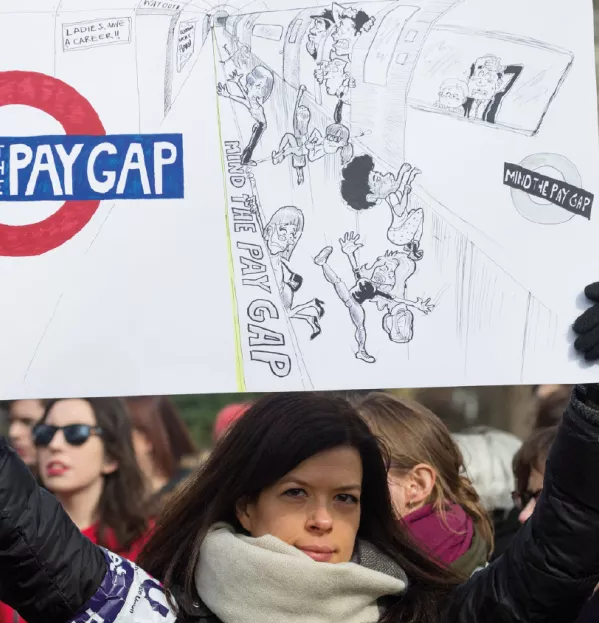The pay gap is a problem in need of a solution

The requirement to report the gender pay gap has produced results both expected and unexpected. Many financial institutions have rightly been criticised for huge gaps, especially in relation to bonuses, which seem to indicate women are losing out compared with men in similar positions.
Large schools, multi-academy trusts and colleges are also required to reveal gender pay gaps, and some are significant. Indeed, Tes reported that educational institutions accounted for half of the biggest gaps (bit.ly/BiggestGap).
Many of these schools and colleges have tried to counter criticism by pointing to the relatively high numbers of women in upper quartile pay bands, and saying that their figures are skewed by a high number of low-paid female staff.
This may be an explanation but isn’t it also a problem? Our college reported a gap well below the sector average, at just under 8 per cent, but we still think we need to do more.
Most children’s first meaningful experiences of the world of work are drawn from learning what their parents do, and from their time at school. These make a powerful impression. I remember one of my sons playing with the daughter of a friend when they were both 4, pretending to be parents getting ready to go to work. As he walked out of the room with an old briefcase, she laughed, saying: “You can’t be going to work, you’ve forgotten your tools!” since this was what her father did every day.
Schools are strange, atypical workplaces but they are still very influential and have changed radically over the past two decades.
Workforce census figures show that about one in 12 working women in this country is now employed in a school. While that includes a healthy proportion earning well in relative terms and holding senior leadership positions, it also includes an exceptionally large number doing very low-paid work - 91 per cent of teaching assistants are female.
If we are trying to change mindsets and behaviours, is there a danger that the one workplace we all experience in our formative years could undermine a message around gender equality? Is the employment model in schools reinforcing prejudice? Even if children see both genders in powerful leadership positions, is there not a subliminal message that low-paid work is the sole preserve of women?
Explosion in low-paid work
It is a pertinent question because we didn’t get here by accident. It hasn’t always been like this. Despite the national rhetoric that we want to see a high-pay, high-productivity society, there has been a deliberate explosion in low-paid support jobs in education.
In 2000, the full-time equivalent school workforce comprised 406,000 teachers, 79,000 teaching assistants and 83,000 other support staff. In 2016, there were 458,000 teachers, 266,000 teaching assistants and 235,000 other support staff. So teachers represented 71 per cent of the full-time equivalent staffing in 2000 and now represent only 48 per cent. School today is a very different place, with a far lower proportion of well-paid professionals.
If progress is made nationally in reducing the gender gap, it is likely to be partly down to employers becoming more enlightened and flexible. Given the number of bright women in roles that do not fully utilise their qualifications, this could mean schools having to pay a lot more for the same staff (thereby reducing the gap but bringing financial difficulty) or simply being unable to recruit (thereby reducing the pay gap significantly).
I suspect J K Rowling’s Hogwarts would have a relatively small gender gap. Support staff are thin on the ground: Hagrid and Filch, plus two highly professional women - the matron, Madam Pomfrey, and the librarian, Madam Pince. The first Harry Potter was written in 1997 and the staffing seems to reflect its time. Perhaps a 2016 edition would include an army of teaching assistants?
In any case, while I am very conscious that, as a well-paid, white, male chief executive, I may not be best placed to comment in this area, I think the published figures do suggest a need to talk about our staffing structures.
Ian Pryce is principal and chief executive of Bedford College. He tweets as @ipryce
You need a Tes subscription to read this article
Subscribe now to read this article and get other subscriber-only content:
- Unlimited access to all Tes magazine content
- Exclusive subscriber-only stories
- Award-winning email newsletters
Already a subscriber? Log in
You need a subscription to read this article
Subscribe now to read this article and get other subscriber-only content, including:
- Unlimited access to all Tes magazine content
- Exclusive subscriber-only stories
- Award-winning email newsletters